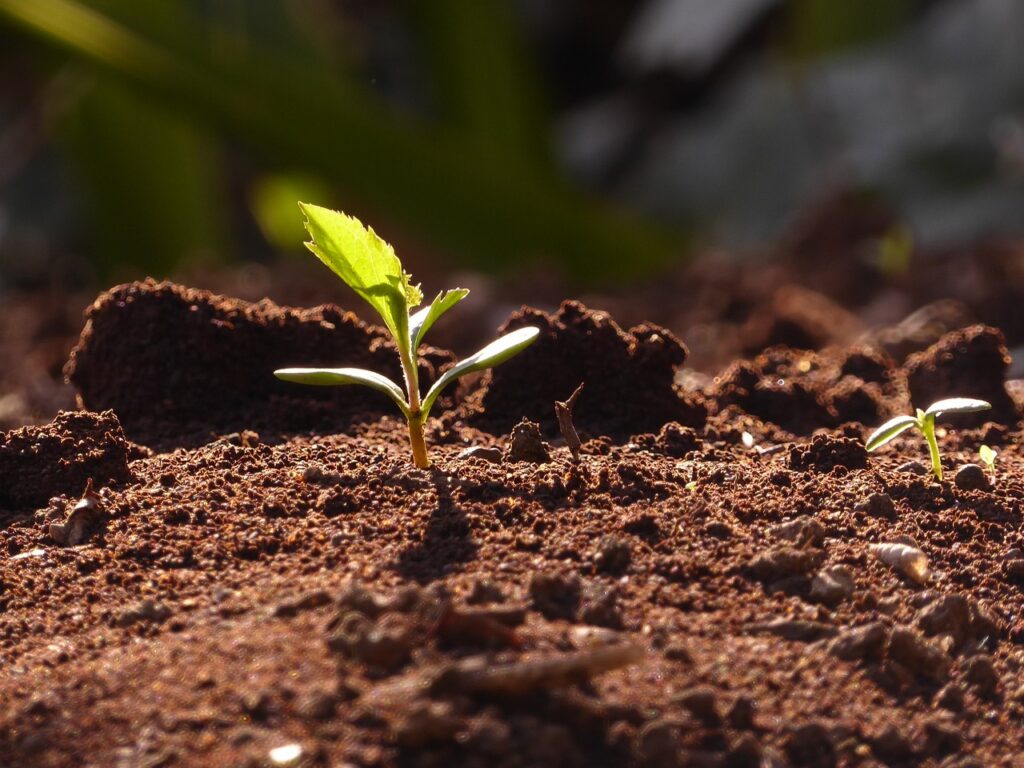This “Essence” is taken from the Sourcebook for Leaders, written by Rabbi Rachel Gartner and Barbara Berley Melits, for Rosh Hodesh: It’s a Girl Thing! This experiential program was created by Kolot: The Center for Jewish Women’s and Gender Studies to strengthen the Jewish identity and self-esteem of adolescent girls through monthly celebrations of the New Moon festival. The program is now available through Moving Traditions.
Fast Facts
Shevat is the eleventh of the twelve months of the Jewish calendar.
Shevat comes at the same time as the secular months January/February. Days begin to grow longer, and the sun shines a bit brighter. In Israel, spring begins in Shevat. Deep underground, the roots of trees slowly wind their way towards water. High above our heads, branches stretch toward the brightening sun.
In Israel almond trees begin to blossom in Shevat. Because they are the first to bloom each Shevat and the nut resembles an eye, an almond tree is called shaked (watcher). Almond trees are said to “keep watch” for spring.
The mazal (constellation) for Shevat is Aquarius, d’li (a vessel filled with water). Miriam (Moses and Aaron’s older sister) was also associated with a vessel of water. Legend teaches that because of her righteousness, Miriam was followed by a mysterious well that sustained the Israelites during the years of the desert wandering. The well, filled with the waters of Creation, is still with us today.
In Shevat Jews take special care to fulfill our obligation to protect and preserve the environment.
Features
Shabbat Shira (The Sabbath of Song) falls on the Shabbat in Shevat when we read the Torah portion B’shalach (Exodus 13:17-17:16), which contains Shirat HaYam (The Song of the Sea). Moses sang this song after crossing the Reed Sea. Afterwards, Miriam led the women in singing their own Shirat HaYam as they danced and played tambourines to celebrate their freedom. The haftarah for Shabbat Shira (See “Festivites”) is the story of the wise judge Deborah (Judges 4:4-5:31) and the heroic woman Yael.
Shabbat Shira Customs
In recent years many women have written English songs about Miriam and her song. Today, many communities celebrate Shabbat Shira with concerts, sing-ins, or extra singing during Shabbat services.
Tu B’Shevat (literally, “the 15th of Shevat”) comes at the same time as the full moon and marks the New Year for the Trees. During Temple times, Tu B’Shevat was something like an ancient tax day. Any fruit that ripened before the 15th of Shevat was taxed as the last year’s crop; anything that ripened after the 15th counted as next year’s crop. These taxes, more accurately called tithes, went toward maintaining the Temple.
Tu B’Shevat Customs
Holding a Tu B’Shevat Seder. In the sixteenth century, the mystics of Sefat (a town in Northern Israel) became interested in Tu B’Shevat as a way to celebrate nature. They created a Tu B’Shevat seder and made up of prayers that enhance our appreciation for trees and fruits. The seder is modeled on the Passover seder and involves drinking four cups of wine and eating up to fifteen different fruits! Today there are many beautiful and creative Tu B’Shevat seders available in print.
Planting Trees. In the late nineteenth century, the growing Jewish settlements in Palestine found planting trees to be a crucial part of restoring the land. From that time until today, Jews all over the world collect money for planting trees in Israel.
Enhancing awareness about and protection of the environment. On Tu B’Shevat we should make an extra effort to learn about important environmental issues and recommit ourselves to protecting and nurturing our world.
Contemplating “The Tree of Life.” The Torah is often referred to as Etz Chaim, “The Tree of Life.” What does this metaphor mean to you?
Etz chaim he lamachazikim bah vetomcheha me’ushar
Deracheha darchey no’am vechol netivoteha shalom
It is a Tree of Life to those that hold fast to it
And whoever holds onto it is happy.
Its ways are pleasant
And all its paths are peaceful.
Fabulous Females
Torah, Women, and Trees
Scholar Penina Adelman reminds us that important biblical women have names signifying trees. Esther in Hebrew is Hadas meaning myrtle, and Tamar (the name of Judah’s wife (Genesis 38), King David’s daughter (2 Samuel 13), and Absalom’s daughter (2 Samuel 14)) means date palm tree. The judge Deborah heard cases while sitting under tamar Devorah, Deborah’s date palm tree. The alon bachut, “the weeping tree,” stands where Rebecca’s nurse, another woman named Deborah, died. Adelman also points out that Etz Chaim He (The Tree of Life) is an important feminine symbol in Judaism. Women bear offspring, as the Torah bears wisdom, and trees bear fruit. A woman’s children are often referred to as the “fruit of her womb.” In Shevat we recognize the fabulous female connection to the life-giving cycles of nature.
The haftarah for Shabbat Shira (See “Festivites”) is the story of the wise judge Deborah (Judges 4:4-5:31) and the heroic woman Yael. It was selected because Miriam and Deborah both sang songs in celebration of God’s miracles. These two women’s poems, scholars tell us, are among the oldest parts of the Hebrew Bible.
Deborah, one of the Women of Light we read about in Kislev, is the only female judge named in the Torah. She was wise and fair. Deborah sat under her date palm tree and decided cases for the Israelites. Once Deborah, who was also called a prophet, urged the Israelites into battle, informing them that God had commanded it and would see to it that they would come out victorious “by the hand of a woman.” When the battle was indeed won, Deborah sang a victory song.
Deborah inspires us to act fairly, cultivate wisdom, and pursue justice. Deborah’s success as a judge–an occupation that in her day was dominated by men–reminds us that women can do anything.
Yael was instrumental in the Israelites’ obtaining the victory that Deborah had prophesied. When she encountered the enemy king, Yael invited him into her tent. She fed him milk to make him drowsy. When he fell asleep, Yael made sure he would never wake again by driving a tent peg through his temple.
Yael, like Judith of Kislev, inspires our praise for her show of courage in a situation of great danger. At the same time, her rather gruesome story reminds us of the evils of battle and should motivate us to do all we can to rid the world of war.
Foods
The Tu B’Shevat Seder is filled with delicious and healthy fruits. Why not enjoy them throughout the month?
In the Tu B’Shevat seder, fruits are divided into three groups:
Fruits with insides we can eat and outsides that we can’t eat. Some examples are bananas, pomegranates, almonds, and oranges.
Fruits with outsides we can eat and pits inside, which we can’t eat. Some examples are olives, dates, cherries, and avocados.
Fruits that we can eat inside and out. Some examples are grapes, figs, and carobs.
Each of these groups can be thought of as different types of people or different moods we might experience. Some people, for example, have a hard, tough shell but are soft-hearted; other people can seem to be very easy-going but they have a lot of inner resolve and conviction. Try thinking about these distinctions and see what you come up with. You can also invent distinctions of your own.
Red and white grape juices are also important parts of the Tu B’Shevat seder. At the seder, white juice or wine is served as the first cup, symbolizing winter, when seeds are still dormant. Next comes white wine or juice with a dash of red, symbolizing spring and hinting at the seeds’ reawakening and the coming of colorful flowers. The third cup is filled with red wine or juice with a dash of white, symbolizing summer when fruits and vegetables grow freely, and we are reminded of the richness of life. Last comes a cup full of red wine or juice, symbolizing autumn, when we celebrate fully the fruits of the harvest season. This is a good month to drink juices and appreciate how delicious and healthful fruits are.
————————-













